
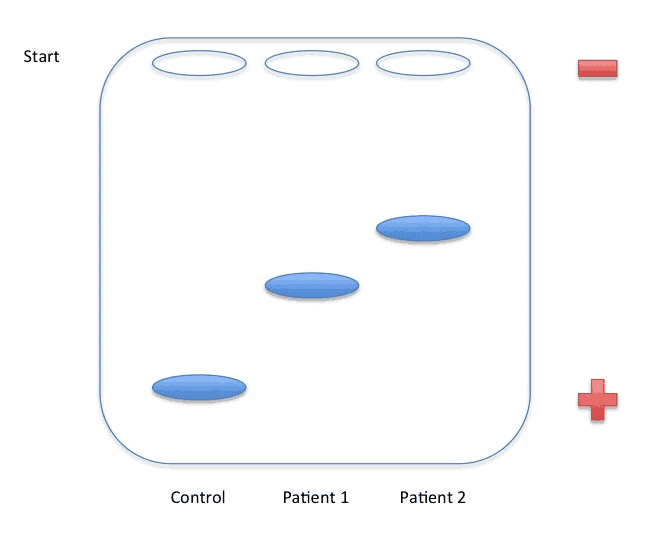
Here, we walk through a topic that confounds many medical students (particularly those distant from their basic sciences curriculum), gel electrophoresis, and apply it in a USMLE Step 1-relevant manner to hemoglobin gel electrophoresis.
USMLE Step 1 Application Questions:
-
What is the genetic mutation in HbC? How will this affect the protein product?
-
What is the genetic mutation in HbS? How will this affect the protein product?
-
Identify which is HbC and HbS in the following gel. Using their underlying mutation, explain why:
Basic questions:
Ready for the recall-type USMLE Step 1 questions?
What is the goal of gel electrophoresis?
What is the role of SDS?
It is critical to unwind proteins, so that their length will be proportional to their size.
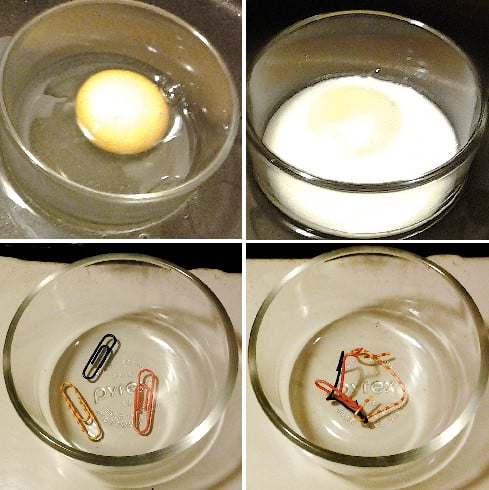
Based on the charge on SDS, if the opposite end of the electrophoresis kit were positive, what direction would the macromolecules move?
What kinds of macromolecules would move the slowest toward the positive electrode?
Southern blot – what molecules used?
Northern blot – what molecules used?
Western blot – what molecules used?
Hemoglobin electrophoresis – what kind of “blot” is it?
What is the genetic mutation in HbC? How will this affect the protein product?
Recall that glutamate = anion; Lysine = cation
What is the genetic mutation in HbS? How will this affect the protein product?
Recall that glutamate = anion; valine = neutral
Wait!
I strongly recommend that you attempt to answer the final questions by yourself first, before looking at the answers. Remember, the USMLE Step 1 exam will test your ability to make connections on the spot. The more practice you have, the higher your score! Then, when you think you might know the answer (or are completely stumped), look at the answers below!
Ready for the answers?
Identify which is HbC and HbS in the following gel (above). Using their underlying mutation, explain why.
Patient 2 = Hemoglobin C (glutamate → lysine mutation will ↑ positive charge → will move LEAST towards positive electrode)
What should you do next?
- Turn the narrative, “Pathogenesis to Presentation” questions into Anki cards by copy/pasting the question/answer into the “Front” and “Back” fields in Anki. Do the same for the fundamental facts that you were unfamiliar with, to maximize your chances of USMLE Step 1 success! Remember: the USMLE is a test of understanding, so the better you can understand these questions, the better your score!
- Add reverse cards when appropriate to your Anki cards
- Re-word the questions/explanations as desired, and BOLD the important text to make it easier to review in the future
- Learn something new? Something unclear? Comment below!
- If you liked this post, please consider sharing it on Facebook/Twitter! I judge the utility of these posts by the number of comments / shares they receive, so if you’d like more, or would like a particular topic addressed, please let us know!
Photo by PlaxcoLab and Wikimedia Commons.

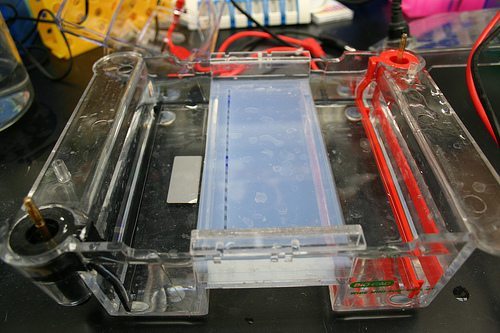



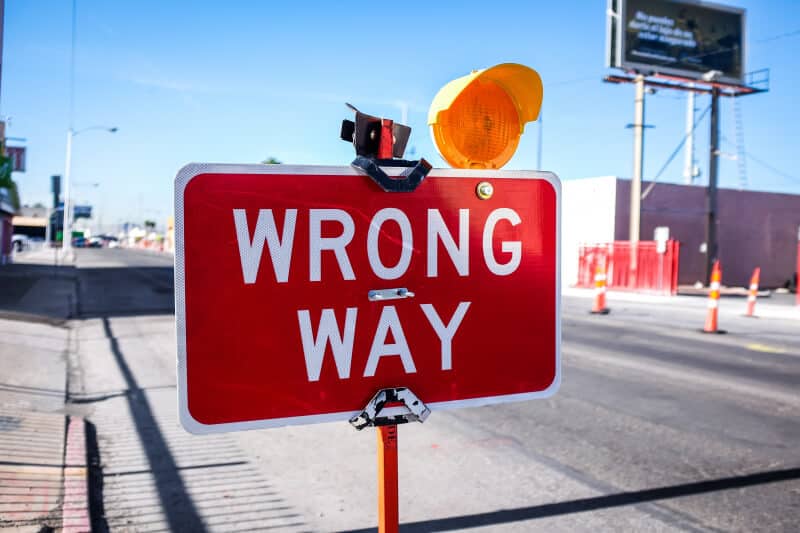


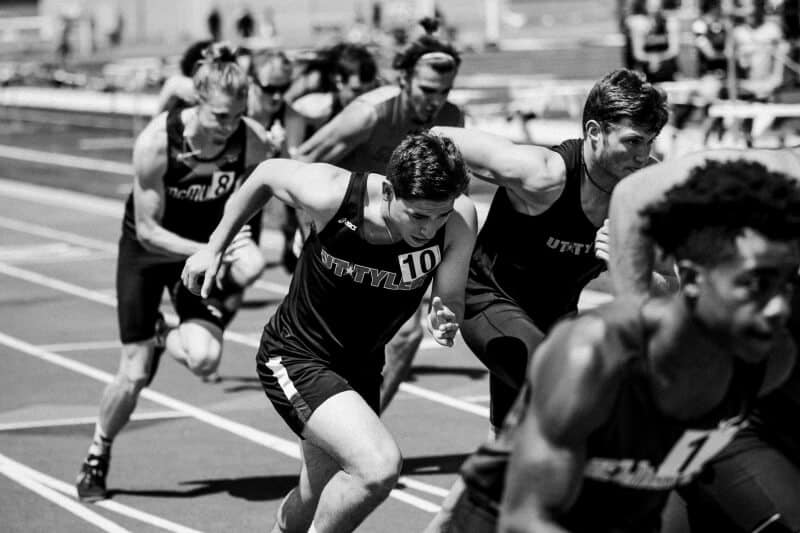
did you mean to write “will move LEAST toward the positive electrode”?